The Final Fantasy series is one of the most iconic and influential role-playing game (RPG) franchises in gaming history. Developed and published by Square (now Square Enix), the series has spanned numerous mainline entries and spin-offs across various platforms since its inception in 1987. Each mainline Final Fantasy game introduces a new world, characters, and storyline, but many of them share common elements, such as a job system, turn-based combat, and a focus on storytelling and character development. The series is renowned for its innovative gameplay mechanics, memorable characters, and stunning visuals that have pushed the boundaries of video game technology on different platforms. Despite its success, the addition of multiplayer was never discussed which drastically changed with the rise of global popularity for MMORPGs in the 1990s.
The decision to create a massively multiplayer online role-playing game (MMORPG) set in the Final Fantasy universe was a significant milestone for Square. The initial idea and conception of Final Fantasy XI can be traced back to the late 1990s and a small team within Square, led by Hiromichi Tanaka. At the time, MMORPGs were a relatively new but rapidly growing genre, with games like Ultima Online and EverQuest capturing the attention of gamers worldwide. Tanaka, a veteran game designer at Square, had previously worked on several mainline Final Fantasy titles, including Final Fantasy III and Final Fantasy V, and was well-versed in the series’ lore and gameplay mechanics. In the late 1990s, he became intrigued by the emerging genre of massively multiplayer online role-playing games (MMORPGs), which allowed players to interact and adventure together in persistent online worlds. Tanaka believed that the Final Fantasy series, with its rich storytelling and immersive worlds, had the potential to be successful in the MMORPG space.
Tanaka pitched the idea of an MMORPG set in the Final Fantasy universe to Square’s leadership, recognizing the commercial potential and the opportunity to attract a dedicated player base. Initially, there was skepticism within the company about the viability of such a project, as Square was primarily known for its critically acclaimed single-player RPGs. However, Tanaka’s passion and vision eventually won over the decision-makers, and in 1997, a small team was assembled to begin the development of what would become Final Fantasy XI. The team faced numerous challenges, including adapting the Final Fantasy gameplay mechanics for an online environment, designing a persistent world that could accommodate thousands of players simultaneously, and implementing robust server infrastructure to support the game’s online functionality. In shaping the overall concept and design of Final Fantasy XI, Tanaka drew inspiration from various sources, including the existing Final Fantasy lore, real-world cultures and mythologies, and the team’s own experiences with MMORPGs at the time.
One of the core design philosophies was to create a game that captured the essence of the Final Fantasy series while providing a unique and immersive online experience. This meant incorporating familiar elements such as the job system, turn-based combat, and a rich storytelling experience, while also introducing new mechanics and features tailored for the MMORPG genre. Tanaka and his team envisioned Final Fantasy XI as a game that would foster a strong sense of community and encourage player cooperation, creating a living, dynamic world, where players could form lasting bonds and embark on epic adventures together. The initial development of Final Fantasy XI was a significant undertaking; While the project drew inspiration from existing MMORPGs and the Final Fantasy series itself, the process of bringing Tanaka’s vision to life was anything but easy. To gain insight into the MMORPG genre, the development team studied and drew inspiration from pioneering titles like Ultima Online and EverQuest. They analyzed these games’ mechanics, world-building, and community aspects, seeking to understand what made them compelling and addictive for players.
Initially, Final Fantasy XI was developed exclusively for the PlayStation 2 console. However, as development progressed, Square recognized the potential for a broader audience and decided to make the game cross-platform, supporting Windows and later the Xbox 360. This decision added another layer of complexity to the development process, as the team had to ensure consistent performance and gameplay experience across multiple platforms with varying hardware capabilities. Despite the challenges, the team’s dedication and passion for the project drove them forward, releasing in Japan on May 16, 2002, and later in North America on October 28, 2003, and Europe on September 16, 2004. Final Fantasy XI stood out from other MMORPGs, both at the time of its release and even in comparison to modern titles, due to its unique blend of traditional Final Fantasy elements and innovative online gameplay features. Here are some of the key aspects that made FFXI distinct: While adapting to the MMORPG format, FFXI stayed true to the core elements that define the Final Fantasy series, such as the job system with multiple, complementing classes, turn-based combat, and a strong emphasis on storytelling and character development.
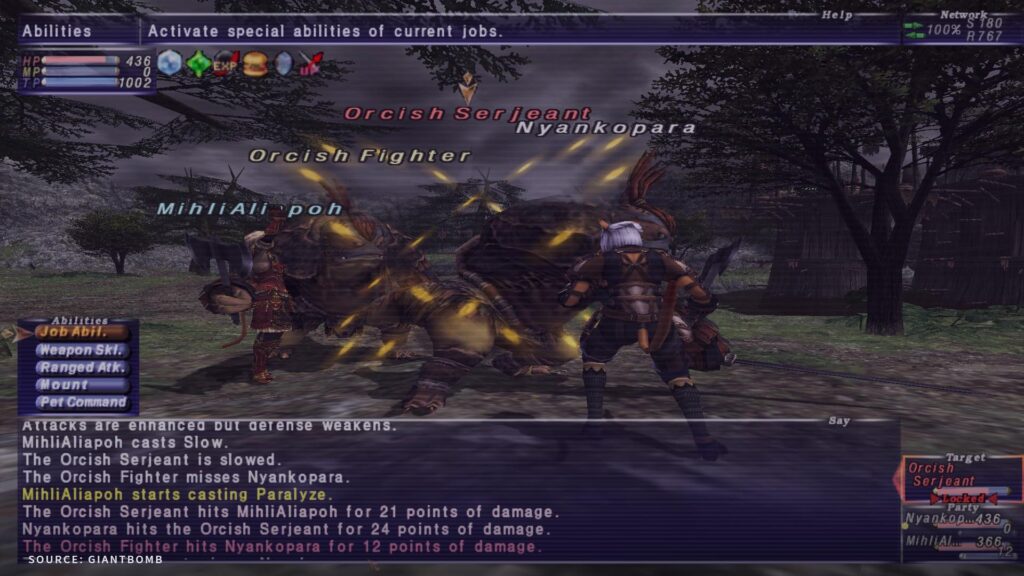
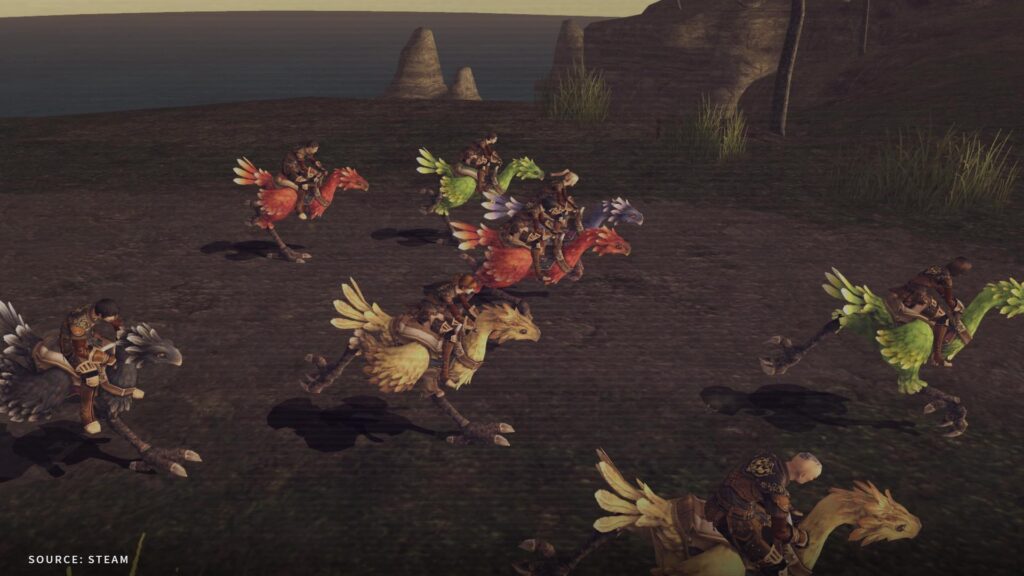
The game featured an expansive and immersive world called Vana’diel, rich in lore and drawing inspiration from various cultures and mythologies, aligning with the series’ tradition of creating captivating fantasy settings. Even familiar Final Fantasy mechanics, like summoning powerful creatures and using magic, were seamlessly integrated into the online gameplay experience. FFXI was renowned for its high difficulty level, requiring players to form parties and alliances to tackle challenging content, fostering a strong sense of cooperation and community where it was basically impossible to progress a character past level 10. Dungeons, raids, and high-level quests were designed to be incredibly demanding, pushing players to learn and perfect their skills, strategize, and work together effectively. Rare and powerful equipment was a coveted reward for overcoming these challenges, creating a sense of accomplishment and pride among players. The game’s combat system, while retaining turn-based elements, introduced real-time mechanics that required coordination within parties and offered ways to chain attacks together if lined up correctly. This also means that, although other MMORPGs already offered engaging real-time combat, Final Fantasy XI made up for the lack of instant action with an added layer of strategy, often preferred by players of turn-based games.
Final Fantasy XI introduced innovative gameplay systems that were ahead of their time, such as the Conquest system, which allowed players to align with one of several nations and engage in territorial conflicts. Communication on a global scale seemed crucial for a thriving community. Therefore, an auto translation tool was added. It didn’t exactly translate every word but instead gave players a choice of dozens of terms and phrasings typically used in an online game. Every player would see these words in their native language, making it much easier to overcome language barriers and anxiety. An extensive crafting system was added, enabling players to gather resources, create various items and equipment, and contribute to the in-game economy. The “Raising” system allowed higher-level players to assist lower-level characters, fostering a sense of community and mentorship while also helping to mitigate the high base difficulty of many in-game activities. Additionally, dynamic events, such as the appearance of powerful beings called “Notorious Monsters,” added an element of unpredictability and excitement to the game world.
In summary, FFXI helped popularize MMORPGs, added greater depth and variety to their gameplay systems, and set new standards for accessibility, socialization, and storytelling that influenced many future entries in the genre. By early 2003, it had reached over 200,000 active subscribers. This number continued to grow steadily for the next few years, reaching its peak of popularity from 2005-2007 with 500,000 – 1 million active subscribers at any given time. Final Fantasy XI received numerous expansions over its lifespan, adding new stories and areas to explore and regular updates kept the game feeling fresh. It continued to be successful but began declining in the late 2000s as other newer MMORPGs came out because, while revolutionary at the time, FFXI began showing its age in terms of visuals, accessibility, and cumbersome gameplay systems. Final Fantasy XI was very punishing and time-consuming for casual players, which severely hampered mainstream accessibility and appeal. After supporting FFXI for years, Square Enix decided it was time to develop a new, modern MMORPG – Enter Final Fantasy XIV (FFXIV).
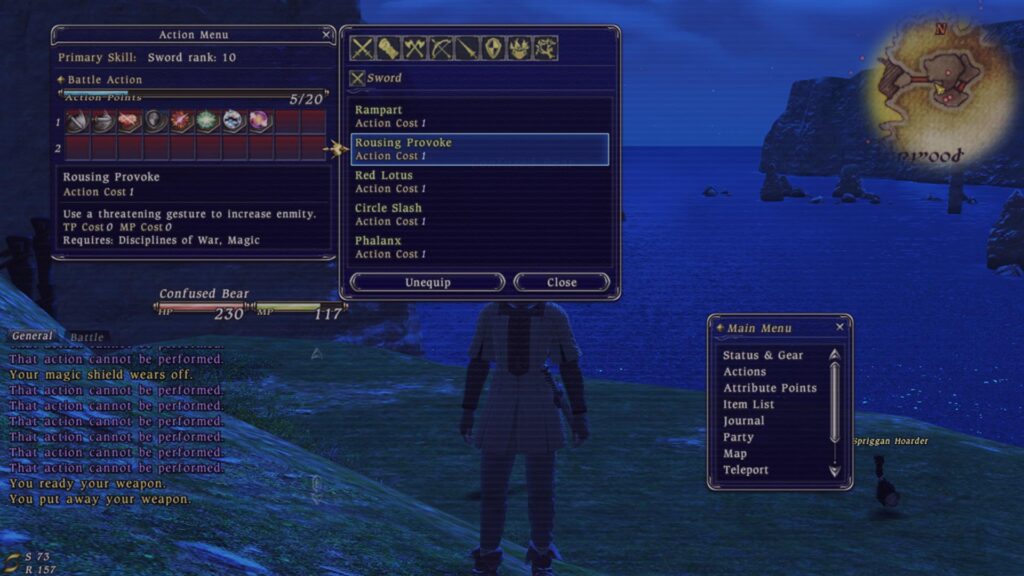
The goals for a new MMORPG called Final Fantasy XIV with ─ at least ─ similar impact and success were clear: Keep the strengths of what made Final Fantasy XI popular, like story focus, community, and Final Fantasy charm but advance it in many aspects as modernized visual presentation with high quality 3D graphics and detailed character and environment models. Additionally, streamline cumbersome mechanics and menus to be more intuitive and user-friendly with added quality-of-life features to respect player time better, which should appeal to both hardcore and casual audiences. Final Fantasy XIs expansive job system would return with even more customization and flexibility through the Armoury System. Combat would be changed, from slower turn-based into a faster, real-time battle system and solo players could progress on their own, more easily and at their own pace. The most important aspect to retain would be the cross-platform play on PCs and consoles to allow for a vast, global community to take part.
Final Fantasy XIV first launched as 1.0 version in 2010 after a rushed development cycle plagued with difficulties, to an underwhelming public opinion. The game was built on unstable legacy code and game systems that were buggy and unintuitive, with major technical problems like severe server lag and crashes. It didn’t help that even the new world ─ Eorzea ─ felt bland and empty due to copy-pasted environments and tedious travel. Combat, skills, and class balance issues resulted in repetitive, unsatisfying gameplay and a lack of community features made the MMO world feel isolating rather than social. Overall, a lack of polish and fun factor made the 1.0 launch underwhelming for fans eager for a new Final Fantasy MMORPG.
The actual development of Final Fantasy XIV started around 2005, headed up by Nobuaki Komoto as director and producer, with Hiromichi Tanaka, the director of Final Fantasy XI, in an advisory role. Komotos team consisted of developers who mostly only had experience working on single player Final Fantasy titles and very few had actual MMORPG development expertise. From the start, very ambitious goals were set, including creating new MMO-specific technologies from scratch rather than utilizing proven existing tools. An attempt to build new proprietary graphics and server engines resulted in technical difficulties and unstable performance with team members later admitting that the leadership did not understand the complexities involved in developing a smoothly functioning online game. Nobuaki Komoto had mainly only worked on single-player Final Fantasy games himself, not operating live services, which became evident in his approach to developing FFXIV. There was confusion around gameplay direction, with mixed messaging leading to muddled systems and features changed frequently during development. Yet, this unfinished state was forced out to meet the planned launch date before it could be properly tested and iterated on.
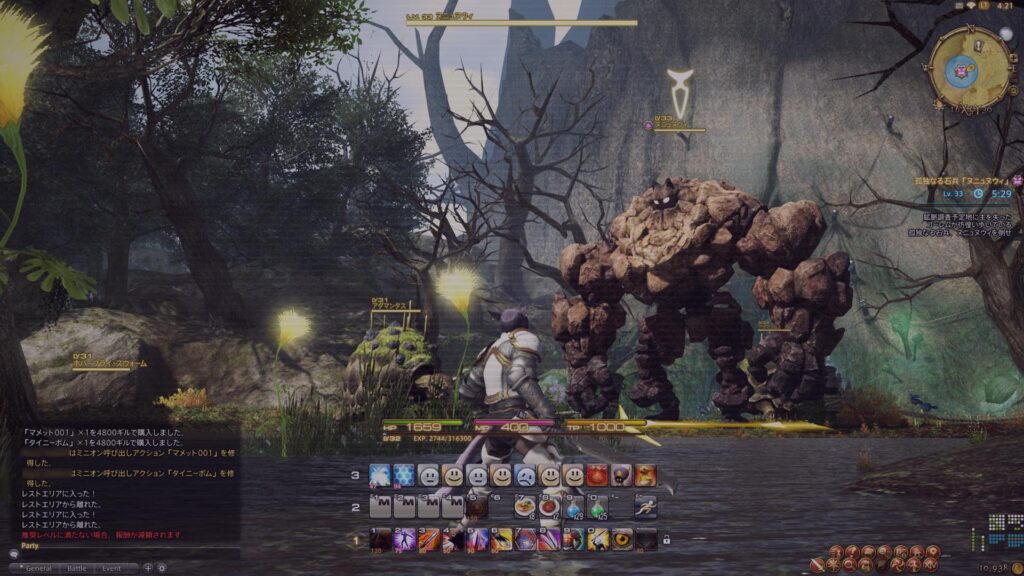
Veteran MMORPG talent was eventually brought on late in development, but not soon enough to change the course of development meaningfully. The result was a very rough, unpolished, and content-light initial 1.0 release rife with technical problems, badly explained mechanics, and repetitive gameplay. Press and gamers alike felt the lack in quality and quantity, leading to poor reviews and a general disappointment with Square Enix, especially after having created Final Fantasy XI. The pressure was on Square to either see this project through or cancel it altogether. Final Fantasy is the flagship franchise of the company and an online game with a bad reputation could hurt future titles to come so instead of giving up on the project, Square decided to act. Leadership in the development team was replaced with Naoki Yoshida ─ often referred to as Yoshi-P ─ a producer and developer from another famous inhouse franchise called Dragon Quest. Yoshida was an avid gamer, Final Fantasy fan and well versed with MMORPG-games, having played titles like Ultima Online and World of Warcraft himself.
Under his rule, a task force was created to evaluate the state of the game and the possibilities they had to repair or at least mitigate the damage already done. Yoshida conducted extensive evaluations of 1.0 issues through developer and player feedback, breaking down big problems into smaller tasks. Main issues were poorly written netcode, a clunky and overly complicated user interface and the overall lack of uniqueness when it came to the world of Eorzea. After putting weeks into the evaluation process, Yoshida came up with two plans for the Square Enix management board, the first being to patch the game up to a state that it felt okay, but never great or even good, which would ultimately mean that its lifespan could very well be over before that of Final Fantasy XI. Even more so, Square had previously announced that Final Fantasy XIV would also be playable on the Playstation 3, which wasn’t the case at that point. Noshida proposed a second plan, outlining the roadmap to a side-by-side development of the “old” Final Fantasy XIV, or Final Fantasy 1.0, and a new version, mostly build up from the ground, using the bits and pieces of 1.0 that were still valuable. This option would prove much more risky but with greater risk could come the greater reward of redeeming the company.
Managing limited resources between two major initiatives was difficult but Yoshida and his team ultimately decided to develop A Realm Reborn while still running and attempting to improve the original 1.0 version of Final Fantasy XIV. A Realm Reborn wasn’t only to become a “remake” of 1.0 but built on a new, stable game engine and fresh code base engineered for MMORPGs. Recognizing the importance of a stable and scalable online environment, Yoshida also prioritized upgrading the server infrastructure. This was crucial for supporting a large and active player base, facilitating smoother gameplay, and laying the groundwork for future expansions. The user interface was completely redesigned to be more intuitive and user-friendly. Yoshida understood that a cumbersome UI detracted from the gameplay experience, so simplifying navigation and making information more accessible was a priority. Interestingly, above anything else, he put the community. In his opinion, without the trust of their core player fanbase, which were playing 1.0 despite all its issues, it wouldn’t make sense to create something new. Events, forums, and social media were used effectively to engage with the community.
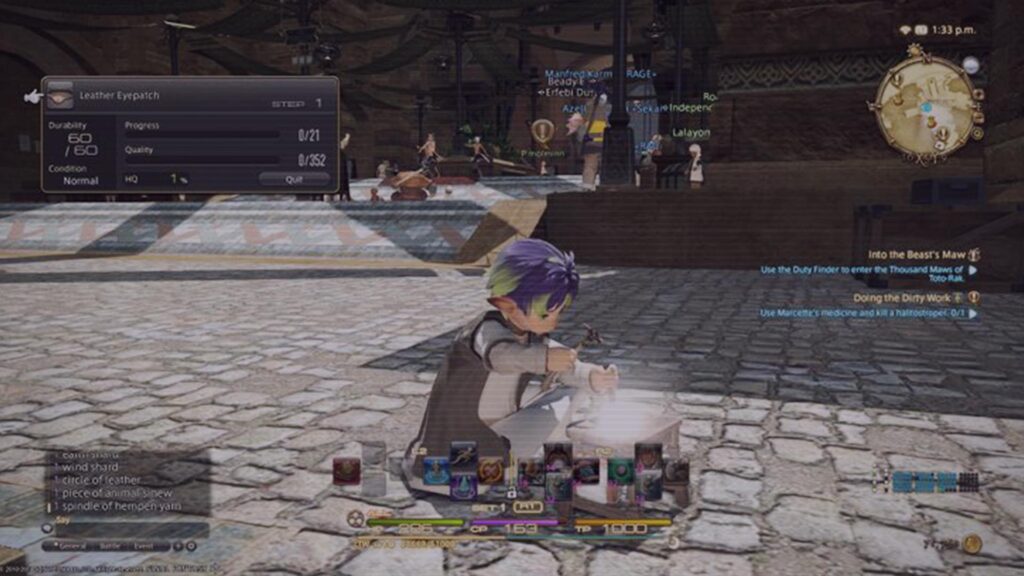
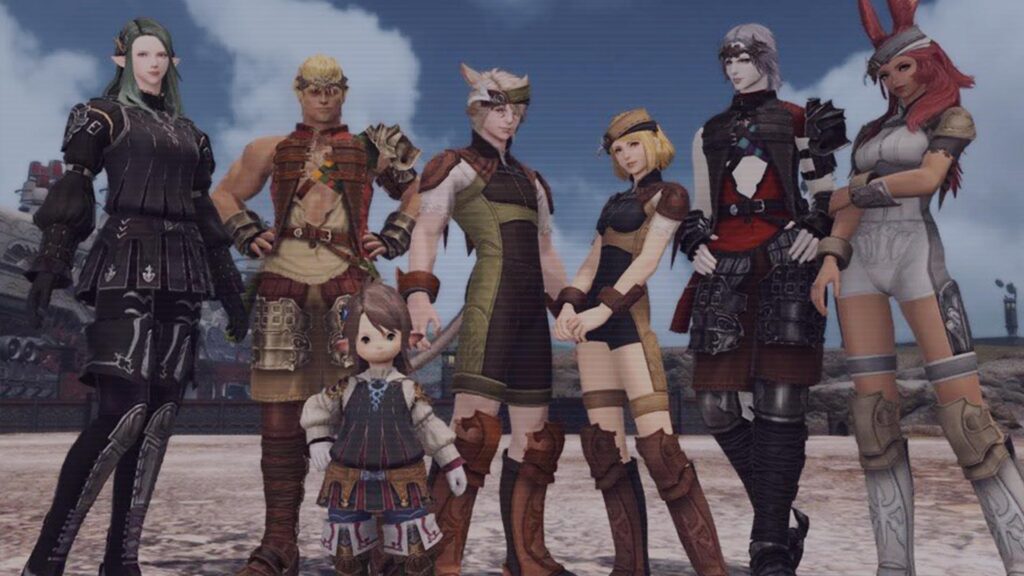
The team redesigned the game world, Eorzea, and overhauled gameplay systems to improve the player experience, crafting a new, engaging storyline that would conclude the 1.0 era and transition into A Realm Reborn, making the game’s failure part of its lore. Throughout development, Yoshida maintained an open line of communication with the player base, sharing updates and gathering feedback through forums and letters from the producer. The transition from 1.0 to A Realm Reborn was both a technical and narrative challenge. The team decided to incorporate the game’s shutdown into the storyline, culminating in an apocalyptic event called The Seventh Umbral Calamity which would destroy the world of Eorzea, setting the stage for its rebirth in A Realm Reborn. Leading up to the shutdown in November 2012, in-game events foreshadowed the coming disaster. The final moments were marked by a spectacular in-game event, followed by a cinematic trailer showing the destruction of Eorzea. To this day, this a rather unique approach and a masterclass in connecting both, old and new players alike.
However, before the launch of ARR, extensive beta testing phases allowed players to experience the new game and provide feedback, ensuring the game met community expectations. Final Fantasy XIV: A Realm Reborn officially launched on August 27, 2013, to critical and commercial success and was praised for its engaging content, beautiful visuals, and responsive gameplay. Over the following years, major expansions like Heavensward, Stormbringer and Endwalker expanded the world and its features, adding new mounts, environments, classes and, of course, raids and dungeons. The housing was massively expanded and crafting and gathering were continually refined to be more streamlined and multifaceted. PvP wasn’t always the focus and heart of A Realm Reborn but it too became updated, offering multiple game modes with massive scale battles or quick four versus four arena matches. Learning from their past mistakes, the team now regularly holds community live streams to foster transparency between players and the dev team.
A couple of things, both major and minor, make Final Fantasy XIV unique in its own way: the armory system allows players to level up and switch between all classes on one character rather than needing alts which provides gameplay flexibility. The glamour system, while today being a staple in many other MMORPGs, offers deep cosmetic customization by letting players change gear appearance while retaining their stats. The playable races of Eorzea exhibit detailed cultural motifs in their outfits with inspiration drawn from real world cultures and intricately crafted gear designs with high fantasy flair characterized by sweeping cloaks, ornate armor, and elegant blades that look like they could actually exist. As it is the case with many other Final Fantasy titles, players enjoy a sweeping orchestral soundtrack composed by renowned Final Fantasy composer Nobuo Uematsu at first, later by Masayoshi Soken. Uematsu is well known globally for themes like One Winged Angel but Soken added its own flavor to the music, making the soundtrack of FFXIV one of the best in the entire series.
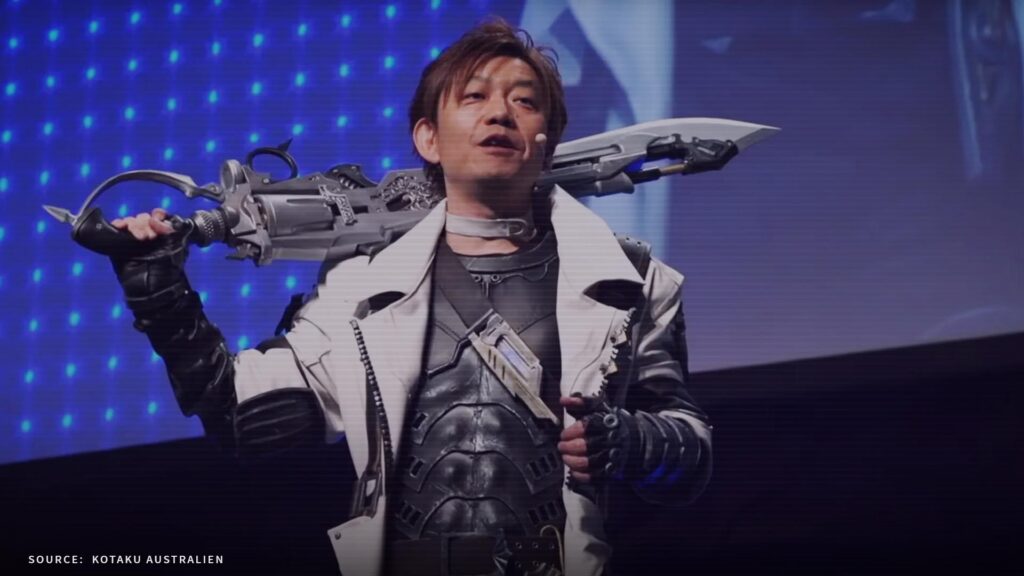

Finally, what made 1.0 feel soulless was the absence of an engaging and original narrative. A Realm Reborns plot not only overarches several expansions but also branches out into zone-specific plotlines, filled with political intrigue, clan rivalries and magical mysteries. Optional side quests develop quirky characters and locales without being tied to progression and character voice acting brings emotional nuance during pivotal moments. A welcoming novice area and streamlined early quests onboard newcomers smoothly with easy to pick up class mechanics but lots of room to master high-end nuances.
From its troubled launch, FFXIV has risen to become one of the most popular pay-to-play MMORPGs, not only standing toe-to-toe with longstanding giants like World of Warcraft in quality and popularity but even surpassing Blizzards MMORPG in terms of subscriptions and concurrent players with the 2021 expansion Endwalker. FFXIV is praised for having one of the friendliest and most welcoming online gaming communities and the gameplay actively encourages cooperation and forming bonds with other players. The game is lauded for expertly representing traditional Final Fantasy hallmarks like visual flair, an excellent soundtrack, and story focus in a MMO form. With its tech and systems battle-tested, the development team can focus on creating innovative content and new features moving forward, with a planned expansion for summer 2024 called Dawntrail. A Realm Reborn learned from 1.0’s mistakes by starting over rather than building on shaky foundations. Looking ahead, the game’s ability to adapt, evolve, and continue to engage players promises a bright future, ensuring its place in the annals of gaming history for many years to come.

















